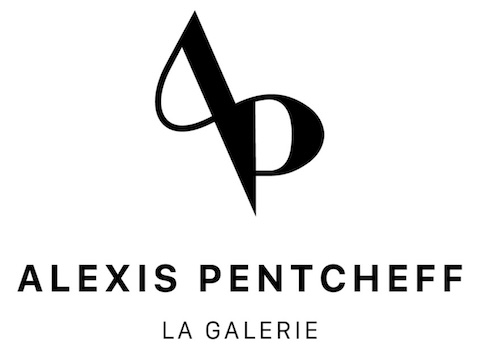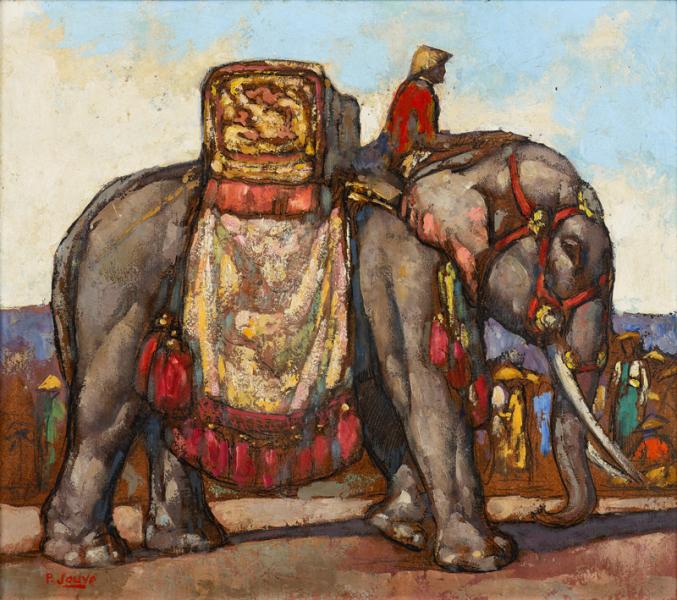Éléphant caparaçonné et son cornac, Hué, c. 1922
Oil on cardboard, signed lower left and dedicated to Miss Mollet on the back.
35 x 40 cm
History:
This painting of a caparisoned elephant with its mahout was painted on the motif by Jouve in the imperial city of Hue in December 1922. At the end of 1922, Jouve stayed in Hué, after visiting Ceylon, Malaysia, Cochin China, Annam and Angkor, as part of a trip made possible by the grant from the General Government of Indochina in 1921. Jouve kept this painting in his studio throughout his life, then offered it to Miss Mollet on January 1, 1968, who later became his wife, Roberte Jouve. This painting is dedicated to her on the back.
Provenance :
Paul Jouve's collection
Purchased from the artist by the current owner's father
Bibliography:
Félix Marcilhac, Paul Jouve peintre sculpteur animalier, Les éditions de l’Amateur, 2005, illustrated in full page on p.152.
Exhibition history:
Paul Jouve et Jean Després, Atelier de Paul Jouve, 70 bis rue Notre-Dame-des-Champs, Paris, 7 – 11 June 1961.
During his stay in Indochina in 1922–1923, Paul Jouve produced numerous studies of elephants, fascinating figures of strength and majesty. Here, he depicts a richly caparisoned animal with its mahout, in a scene that combines monumentality with naturalistic precision. The massive bulk of the beast, enhanced by the bright colors of its ornaments, contrasts with the liveliness of the background.
This painting holds a singular place in the artist’s career: Jouve chose to keep it in his studio throughout his life, and dedicated it to the woman who would become his wife. It embodies both the vivid memory of his journey to Hué and the central role of the elephant in his bestiary, alongside the great felines that brought him renown.

